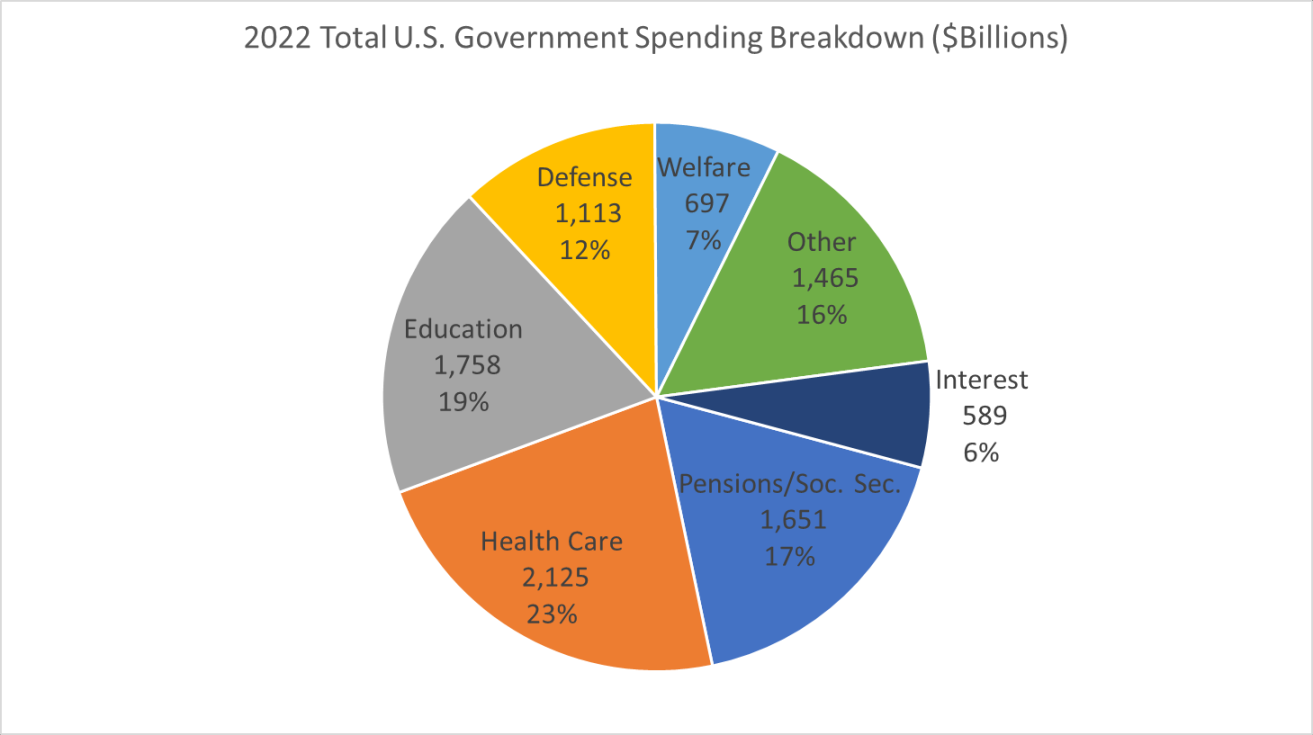Public Spending: Everything You Need to Know
Public Spending: A Comprehensive Guide

Public spending, also known as government expenditure, refers to the allocation of funds by a government to procure goods and services for the benefit of its citizens. It encompasses a wide range of activities, from infrastructure development and education to healthcare and social welfare programs. Public spending plays a crucial role in shaping a nation’s economic landscape and influencing the overall well-being of its population.
Understanding Public Spending: Definition and Objectives

Public spending is the process by which governments allocate resources to fulfill their societal obligations and achieve their policy goals. It involves the utilization of public funds to provide essential services, maintain infrastructure, and promote economic development.
Public spending serves multiple objectives that contribute to the overall well-being of a nation. These objectives include:
1. Economic Stabilization: Public spending can be used to stabilize the economy during periods of recession or economic downturn by stimulating demand and creating jobs.
2. Infrastructure Development: Investments in infrastructure, such as roads, bridges, and public transportation, facilitate economic growth and enhance the quality of life for citizens.
3. Education and Human Capital Development: Public spending on education equips individuals with the skills and knowledge necessary to contribute to the workforce and drive economic progress.
4. Healthcare and Social Welfare: Public healthcare programs provide essential medical services to citizens, while social welfare programs support vulnerable populations, ensuring a basic standard of living.
5. Environmental Protection: Public spending can be directed towards environmental protection initiatives, combating pollution, and promoting sustainable practices.
Functions of Public Spending: Allocating Resources for Societal Needs
Public spending involves the allocation of resources from public revenue, such as taxes and fees, to various sectors and programs. This process is guided by government budgets, which outline the planned expenditures for each fiscal year.
Effective public spending requires careful prioritization and efficient allocation of resources. Governments must balance competing needs and ensure that spending aligns with their overall policy objectives.
Public spending is subject to scrutiny and oversight by legislative bodies and citizens. Governments are accountable for the efficient and effective utilization of public funds, ensuring transparency in their spending decisions.
Significance of Public Spending: Driving Economic Growth and Social Welfare
Public spending can stimulate economic growth by investing in infrastructure, education, and research and development. These investments enhance productivity, attract businesses, and create employment opportunities.
Public spending plays a critical role in promoting social welfare by providing essential services such as healthcare, education, and social assistance. These programs contribute to poverty reduction, improved living standards, and greater social equity.
Public spending can be used to address income inequality and promote social justice by redistributing resources from higher-income groups to lower-income groups.
Challenges of Public Spending: Ensuring Efficiency and Effectiveness
Public spending often faces challenges related to efficiency, ensuring that resources are utilized in the most productive manner possible. Factors such as bureaucratic inefficiencies, corruption, and wasteful spending can hinder the effectiveness of public programs.
Evaluating the effectiveness of public spending is crucial to ensure that programs are achieving their intended outcomes. This requires rigorous monitoring and evaluation frameworks to track progress and identify areas for improvement.
Governments often face the challenge of balancing competing priorities when allocating public funds. They must weigh the needs of various sectors and ensure that spending aligns with long-term development goals.
Solutions to Public Spending Challenges: Enhancing Accountability and Transparency
Robust institutional frameworks are essential for effective public spending management. This includes clear policies, well-defined procedures, and competent personnel to oversee the allocation and utilization of public funds.
Transparency and accountability mechanisms are crucial to ensure that public spending is conducted in a responsible and ethical manner. This includes public disclosure of budget information, independent audits, and citizen participation in decision-making processes.
Adopting performance-based budgeting approaches can enhance the effectiveness of public spending by linking resource allocation to specific outcomes and targets. This encourages departments to demonstrate the value of their programs and improve efficiency.
Information and Data: The Cornerstones of Evidence-Based Public Spending
Effective public spending relies heavily on the availability of accurate and timely data. Governments should collect and analyze data to inform their spending decisions, track program performance, and identify areas for improvement.


